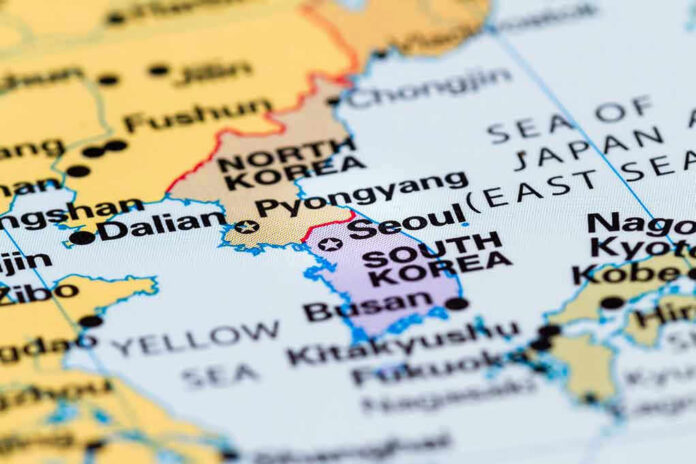South Korea now finds itself caught between a Trump administration demanding allegiance in America’s showdown with China and the threat of devastating tariffs that could upend global shipbuilding—and you won’t believe the price Washington wants for “friendship.”
At a Glance
- The U.S. is demanding South Korea support its China containment strategy as a precondition for shipbuilding cooperation.
- President Trump’s new 25% tariff on South Korean imports looms unless Seoul agrees to Washington’s terms.
- South Korea faces a dilemma: align with the U.S. and risk Chinese backlash, or resist and face crippling tariffs.
- Global shipbuilding and strategic alliances hang in the balance as negotiations drag on ahead of an August 1 deadline.
Washington’s Ultimatum: “Support Us or Pay”
Washington’s latest move is as subtle as a sledgehammer: cooperate with the U.S. on shipbuilding, but only if South Korea signs on to a hardline campaign to contain China’s exploding shipbuilding dominance. On July 11, South Korean official Chang Sung-gil confirmed that the U.S. was making support for its China containment policy the price of admission for any industrial partnership. This is no simple trade deal—this is Washington demanding Seoul pick a side in a three-way industrial brawl that threatens to redraw the map of maritime power.
President Trump has already thrown down the gauntlet, announcing a 25% tariff on South Korean imports set to hit August 1 if no agreement is reached. The message couldn’t be clearer: American leverage comes with strings, and the first string is loyalty in the fight against Beijing. South Korea wants a waiver. Washington wants a pledge. Neither side wants to blink, but with the clock ticking, the stakes couldn’t be higher for shipbuilders, exporters, and the entire balance of power in East Asia.
Economic Warfare Meets the China Containment Agenda
The U.S. shipbuilding sector has been decimated by decades of neglect, union strangleholds, and—let’s not sugarcoat it—sheer government incompetence. Meanwhile, China’s shipyards, fattened by state subsidies and a relentless military-industrial juggernaut, have blown past South Korea and Japan to become the world’s leading force on the seas. The Trump administration, determined to reverse America’s humiliating decline and shrink the trade deficit, sees shipbuilding as both an economic and a national security imperative. But here’s the catch: America needs allies, and those allies are just as scared of losing access to Chinese markets as they are of U.S. tariffs.
South Korean negotiators, led by Trade Minister Yeo Han-koo, have been scrambling for a compromise in Washington. They want relief from tariffs on cars, steel, and shipbuilding. The U.S. wants Seoul to get on board with an industrial alliance that’s less about commerce and more about confronting China head-on. The result? A standoff that looks more like a high-stakes game of chicken than traditional diplomacy. And if you think the consequences are limited to a few shipyard workers, think again. We’re talking about supply chains, national security, and the future of global trade—all balanced precariously on the edge of a Trumpian ultimatum.
Allies, Adversaries, and the Price of Indecision
The pressure campaign has already sent shockwaves through South Korean industry. If tariffs kick in, Korean exports—from cars to steel to ships—could face devastating losses, threatening jobs and sparking domestic backlash. But caving to Washington’s demands isn’t exactly a free lunch, either. Aligning openly with the U.S. against China risks economic retaliation from Beijing, Seoul’s single largest trading partner. It’s a lose-lose scenario with no easy off-ramp, and the world is watching to see if South Korea will stand with the U.S. or hedge its bets to keep the Chinese market open.
There’s no denying the strategic necessity for the U.S. to rebuild its shipbuilding might. Experts from RAND and elsewhere warn that America simply can’t do it alone—it needs the industrial muscle and know-how of allies like South Korea. But tying critical economic cooperation to a geopolitical loyalty oath? That’s a gamble straight from the Washington playbook, where common sense often goes to die. If the goal is to contain China, why risk pushing allies into Beijing’s arms by making cooperation conditional on marching to America’s tune?
A Shipbuilding Stalemate That Could Sink Alliances
Negotiations are grinding on, with no deal in sight and the August 1 tariff deadline looming like a guillotine. If South Korea chooses the U.S., it could deepen industrial ties but face Chinese wrath; if it resists, it risks tariffs that would hammer its economy and undermine the U.S.-Korea alliance. Either way, the global shipbuilding industry faces uncertainty, delays, and escalating costs—hardly the recipe for economic revival or national security.
This is what happens when economic policy gets hijacked by geopolitical grandstanding. The U.S. wants to contain China, but it’s using the same old playbook—tariffs, threats, and demands for loyalty. South Korea, caught in the crossfire, is left to choose between the frying pan and the fire. And for American consumers, workers, and anyone who cares about the Constitution or the future of U.S. industry, this is yet another reminder that the price of Washington’s power games is paid by the people—while the bureaucrats just keep playing.
Sources:
AINVEST: Encourages South Korea to Collaborate in Shipbuilding to Counter China’s Dominance
The Korea Herald: US seeks South Korea’s support in China shipbuilding containment
RAND Corporation: Why the United States, South Korea, and Japan Must Cooperate on Shipbuilding
Chinascope: US Pushes South Korea to Join Shipbuilding Alliance Against China











